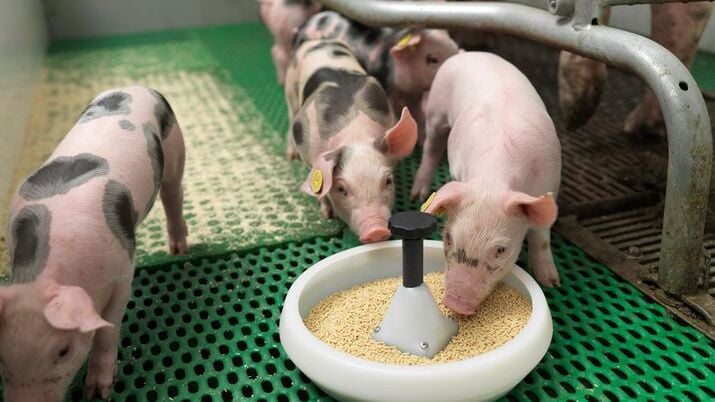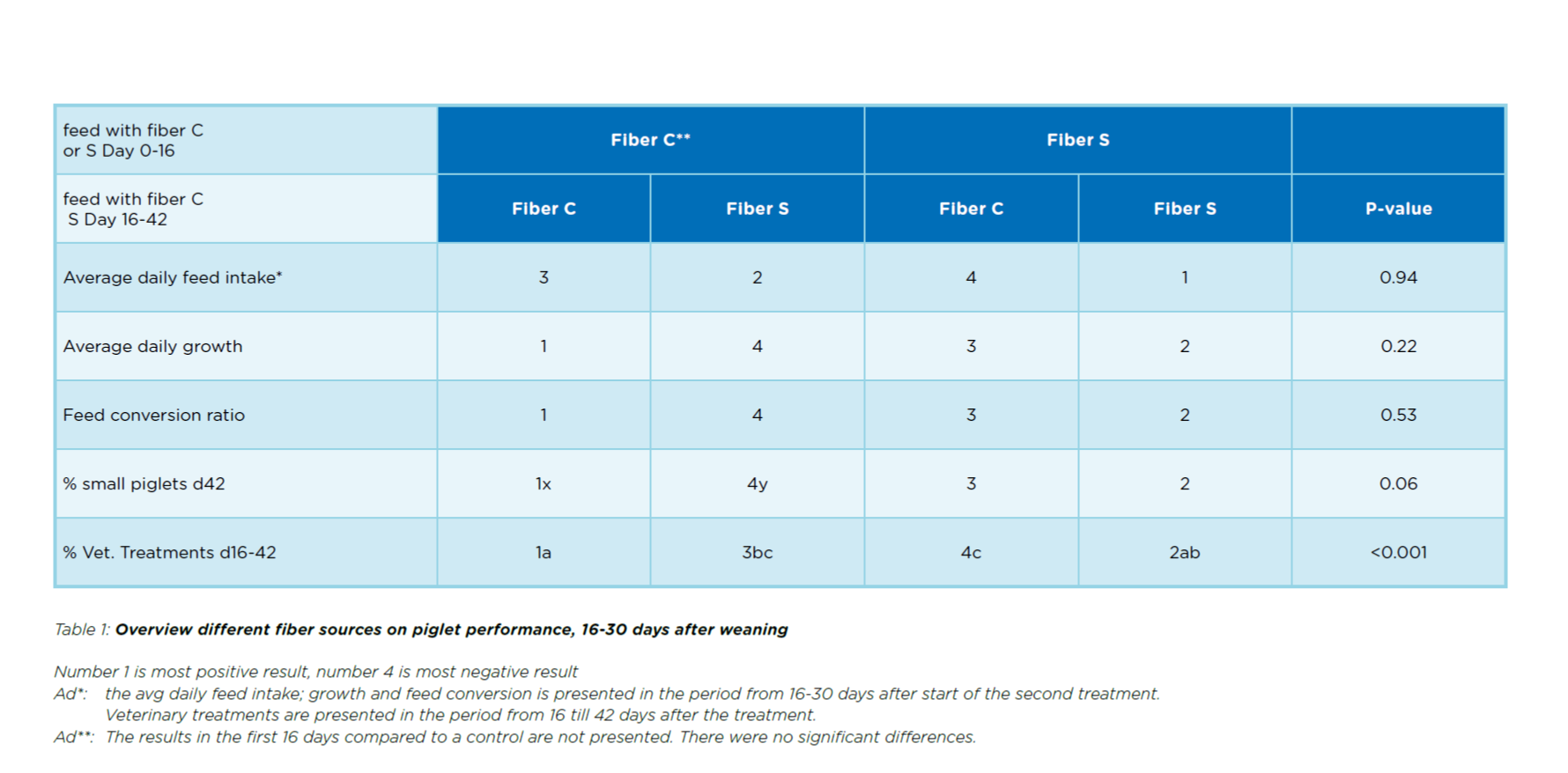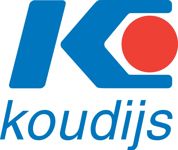Profitable pig production
Smooth transition from creep feed towards more cost-efficient feed for the older piglets. Creep feed stimulates the intestinal development of the piglets, ensuring vital growth and a good start before and after weaning. Using creep feed makes it possible to wean the piglets at a younger age and positively supports the condition of the sow enabling her to have more piglets per year. Often forgotten is that the very high quality and nutritional demands for piglet creep feed can and should be adapted for the subsequent piglet feeds. An aging and well developing piglet with a maturing gastro-intestinal tract becomes less sensitive, which means that very strict nutritional requirements can be partially released reducing the cost of the feed.

Monitoring the transition
However, there are several factors which piglets remain very sensitive towards when changed. Therefore, the challenge is to make the transition to cheaper feed as smooth as possible, without noticeable disruptions for the piglets. To monitor the success of the transition, the physiological reaction of the piglets is obviously important. Next to checking their physiological reaction, feed intake is also a very good indicative parameter. Feed intake should be the same within 48 hours compared to the feed intake on the day before the transition from creep to starter feed.
How can we achieve a smooth transitionchieve a smooth transition
Piglets that grow older have different requirements related to both raw materials as well as to nutrients. Their reaction towards taste differences reduces, however they remain sensitive towards other changes in the feed. For example, changes in sources of crude fibers and the usage of acids the feed. Several trials were conducted in our research facility that illustrate these effects clearly.
Stable feed compostion and fiber content for better piglet performance
Recently a 2x2 trial was conducted where the crude fiber source in the feed 16 days after weaning was changed for half of the population. Chosen fiber sources differ in their fermentability and level of insoluble fibers. The first 16 days piglets received creep feed with one of the 2 sources and at day 16 fiber source was either changed or continued. In Table 1 the results are demonstrated. Piglets that changed fiber source at day 16 show a higher percentage of underdeveloped piglets and received more veterinary treatments. compared to the piglets where the crude fiber source remained the same. Our advice is to be cautious when substituting crude fiber sources and inclusions.

Effect of varying dosages of acids
Acids are highly effective to support piglets during weaning. A combination of several types of acids are used, for its acidifying, flavoring, and antibacterial effects. During a trial we tested feeds with varying levels of organic acids and their possible carry over effect to the next feeding phase. The results showed that a higher inclusion level of used acids in starter feed had a significant positive effect on reducing the % of non-sellable piglets. Another remarkable effect was when a high inclusion level of organic acids was used in creep feed and changed to lower amounts in starter feed, this reduced the intake significantly.
For this reason, Koudijs uses a high level of organic acids in creep feed and changes the acidifying capacity of the starter feed in a gradual way. Next to the acid source also the buffering capacity of minerals in both feeds is taken into account
Enzymes have a positive effect on feed efficiency
High inclusion levels of enzymes, like for example phytase and glucanases/xylanases, which often can be found in creep & starter feeds have positive effects on the phosphor availability and the digestion and availability of proteins, starch, fiber, trace elements and minerals. Digestibility of these nutrients immediately impact digestion and thereby the feed intake pattern. Reduction of enzyme levels needs careful consideration and monitoring.
To summarize
When piglets grow older and get more robust the high-quality standards that apply for the feeds after weaning can and should be reduced to produce in a cost-effective way. The changes in the feeds should be as smooth as possible to maintain optimal performance. Many factors should be considered, knowing that the size of the impact of each factor on their performance is not equal.
The recently conducted trials described in this article have been incorporated into the latest Koudijs pig assortment.
